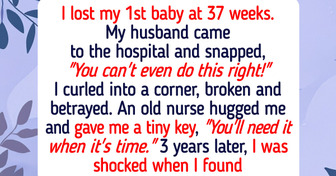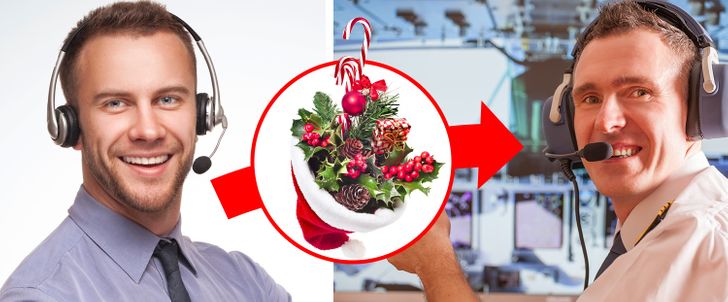???
Pilots Revealed 16 Nuances That Will Help You Become an Expert in Air Travel

Each profession has its own secrets that shouldn’t be shared with anyone “outside the circle.“ Aviation has always been surrounded by mysteries, and this fact makes it even more interesting to learn the ”insides" of this sphere.
Bright Side has collected confessions of crew members from different airlines and wants to share them with you before you start your next trip.
16. It’s prohibited for a pilot to have a beard.
Some airlines forbid their pilots from having beards. The reason behind it is an oxygen mask that should fit the face tightly if an emergency situation occurs (pilots, as well as passengers, will have to put one on). A beard can prevent this.
15. It’s cold on planes for the sake of your health.
14. Planes never fly in straight lines.
On some long flights, passengers are shown a map with the trajectory of the flight. You can see that the aircraft does not fly directly but in a curve. Sometimes it even flies in zigzags. The thing is that our Earth is a flattened sphere, while the map on the screen is flat. The second reason is special requirements for flights, according to which all routes should always be near airports in order to have enough time to reach one in case of a forced landing. Weather conditions affect the trajectory as well.
13. It’s better to be wearing sturdy shoes on a flight.
Give your preference to sturdy shoes with a solid sole because in an emergency evacuation you might find yourself standing in your flip-flops on the hot tarmac or in the weeds in your bare feet.
12. Pilots and dispatchers don’t always communicate in a formal way.
There is a tradition that dispatchers congratulate pilots on all holidays. Just imagine: a pilot can have up to 4 flights per day before Christmas, and during this time about 2,000 people wish him a merry Christmas. "When the German football team became the champions, all dispatchers of the world were congratulating our crew," says Antje Sheppera, a pilot with Lufthansa.
11. An ordinary person will never manage to land a plane.
In movies, we are often shown how pilots lose the chance to land an aircraft because of villains. And that’s when the main character, a very skilled fellow, starts his game. Unfortunately, it’s close to impossible to do it in real life. Even if a person is a genius, is fond of computer simulators that match the real model of an aircraft 100%, and is ready to follow all the instructions from the ground, he is likely to fail due to a simple aspect: stress.
10. Flight delays affect not only passengers but flight attendants as well.
The fact is that flight attendants are paid only for flight hours. The time spent on the ground is not counted. The only thing that air companies offer is a small expense allowance for every hour spent at the airport. Hence, there is no need to show your irritation to a stewardess if your plane is still on the ground for some reason.
9. Pilots take turns to visit the lavatory.
When one of the pilots needs to use the facilities, a flight attendant goes into the cockpit and waits until the pilot returns. This is done to avoid issues such as being locked out of the cockpit while the second pilot suddenly passes out.
8. Airplane food is tasteless, and there is no one to blame for it.
It’s not the fault of the ground staff. The reason is that at high altitude our taste buds and sense of smell start to baffle us. Insufficient humidity, noise in the plane, and low pressure also play a big role in this.
7. Comfortable clothes help you stay healthy.

When on a plane, opt for comfortable clothes with breathable fabrics. It will help greatly when trying to fall asleep. Also, remember that it’s better to wear loose-fitting clothing to prevent the development of deep vein thrombosis. Formal clothing might be a bad choice in this case. Try to avoid caffeine, even during the day, to be able to fall asleep at night. Remember to bring earplugs and a light sleeping mask with you.
6. Pilots communicate with flight attendants via a bulletproof door.
It’s true that pilots have a bulletproof door with a special security code on it. The code will work if a pilot doesn’t take any action within 120 seconds after the code had been entered. It is done in case all the people in the cabin pass out due to depressurization, for example. In regular situations, stewardesses cross-check pilots over the phone. They must do it every 40 minutes during the day and every 20 minutes at night to make sure of their working capacity.
5. The smoothest place to sit is often over or near the wing.
A flying plane is like a seesaw. The "rockiest" seats are in the back. So if you want to have a calm and quiet flight without too much rocking, choose seats in the middle near the wings.
4. There is a special way to signal the airport if the plane has been hijacked.
3. A hard landing can sometimes be intentional.
When you experience a hard landing in bad weather, it might not be because of a lack of pilot skills. In fact, sometimes they do it intentionally. If the runway is covered in water, the airplane has to touch down hard in order to "break" the water layer and prevent aquaplaning.
2. The lights are dimmed intentionally during a nighttime landing.
This happens to adjust passengers’ eyes to night vision. If an emergency happens, it’s prohibited to turn the lights on, and passengers will already be acclimated to darkness and have better navigation.
1. The oxygen in the masks is only enough for 15 minutes.
The oxygen in the masks is enough for a quarter of an hour only, but you shouldn’t panic — this time is enough for the pilot to take you to a lower altitude where you can breathe normally.
Which fact amazed you most of all? Will it affect the frequency of your flights? Share in the comments!
Comments
Pilots giving signal by leaving the wings flap up✌?
Related Reads
Pierce Brosnan’s Wife Stuns People With Her Transformation During Her Latest Appearance

20 Girls Who Just Cut Their Bangs but Look Like They Got a Plastic Surgery

The Story of the Baby Who Challenged Doctors With His Rare Disorder for 20 Years

30 Bright Side Readers Shared the Best (and Strangest) Stories of Their Pregnancy

A Girl Born Without Nose, Who Was Called “Voldemort”, Proved Everyone Is Beautiful in Their Own Way

I Refused to Go to Work After a Family Emergency—HR Got Involved

I Refused to Do Extra Work, and HR Tried to Punish Me

15 Stories That Prove Quiet Kindness Is the Strength the World Still Needs

16 Selfless Acts of Kindness That Changed Someone’s World Forever

I Got Fired the Day Before My Vacation—And HR’s Policy Was Their Biggest Mistake

I Absolutely Refuse to Delay My Retirement to Save My Spoiled Daughter and Her Son

11 People Who Remind Us Kindness Takes a Moment, but Echoes Forever















